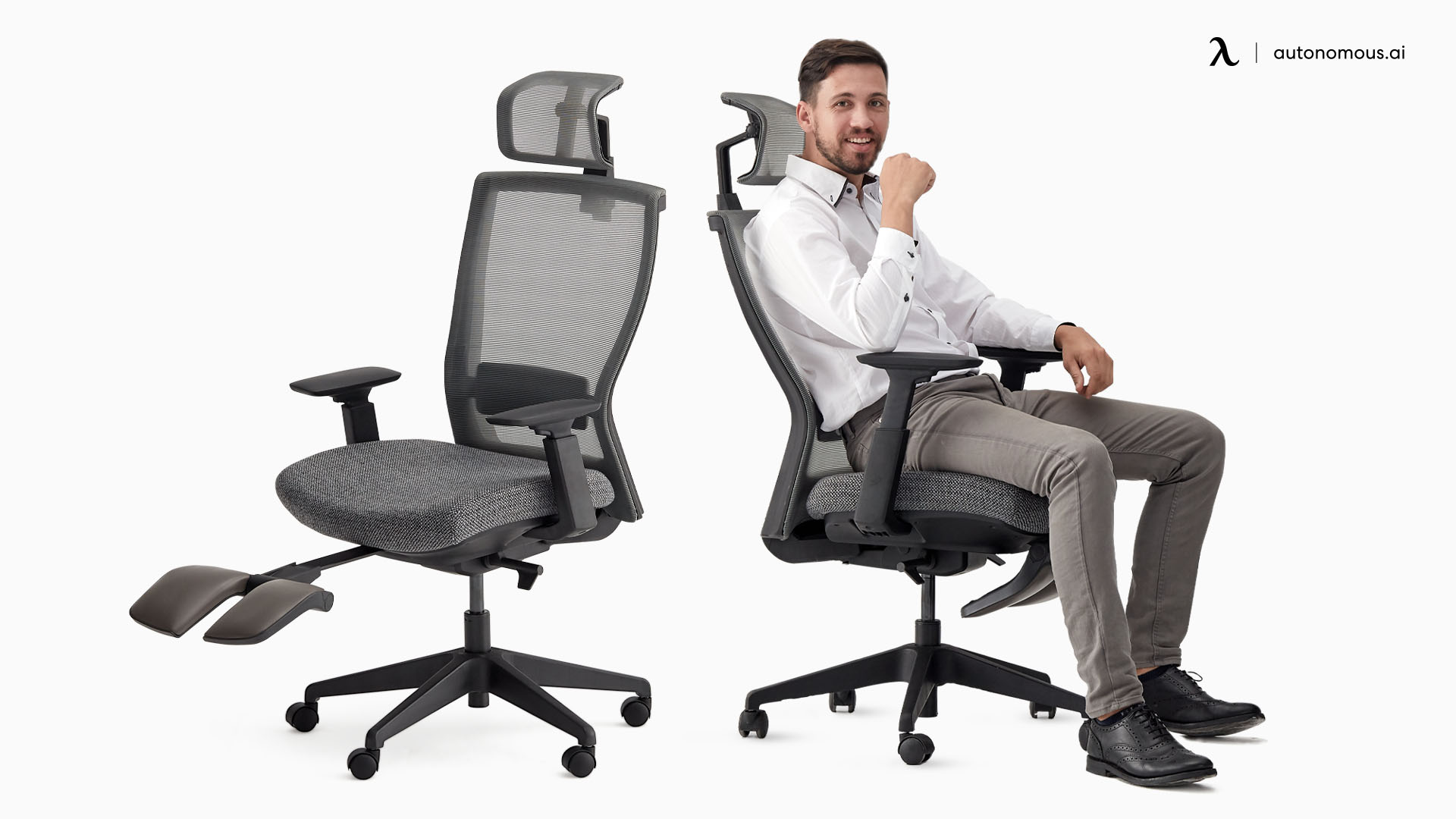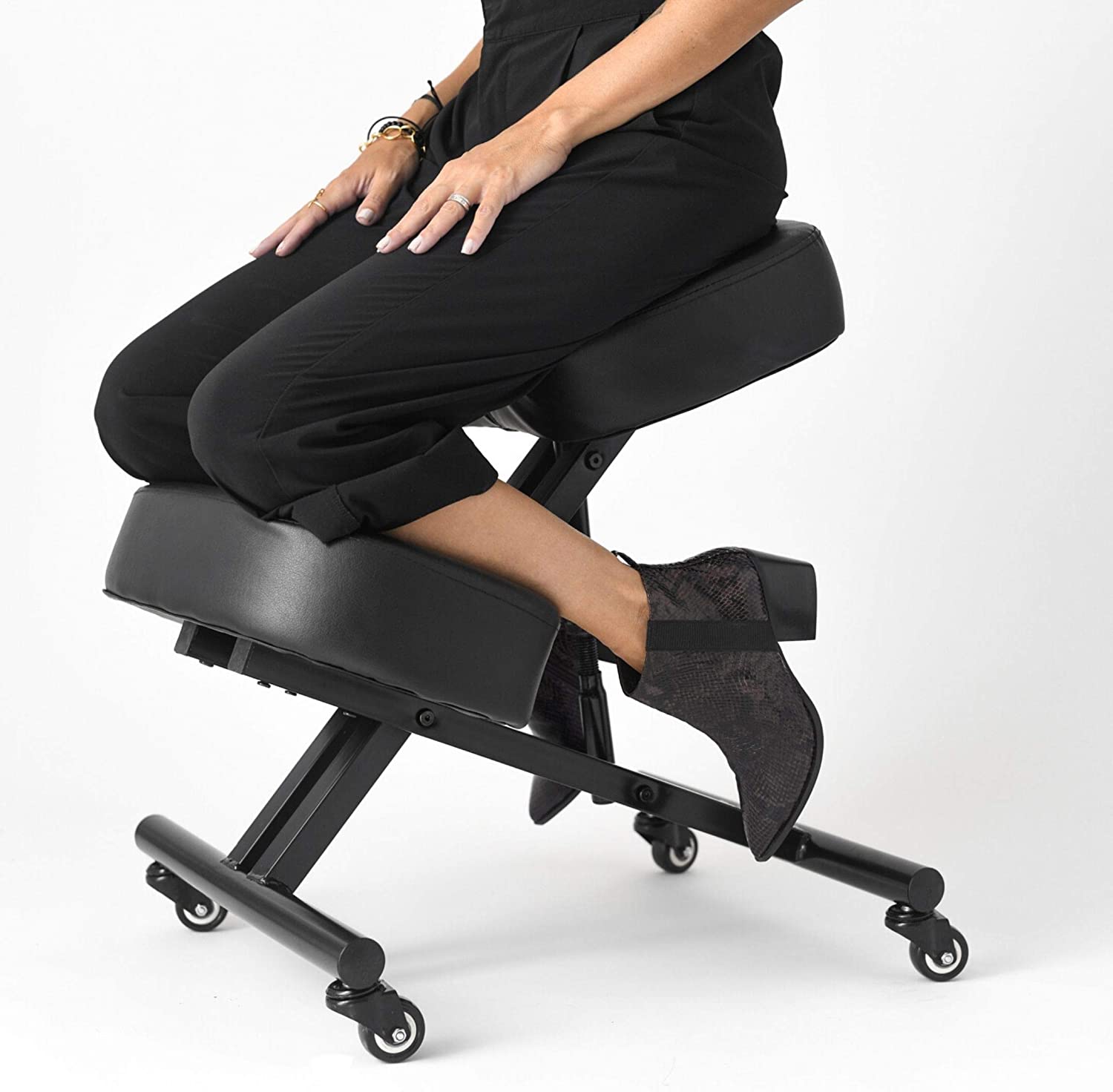Chair Features for Osteoporosis Sufferers

Choosing the right office chair is crucial for anyone, but especially for individuals with osteoporosis. The right chair can significantly alleviate back pain, improve posture, and contribute to overall comfort and well-being. Let’s explore the key features that make a chair ideal for supporting your health needs.
Essential Chair Features for Osteoporosis
The following table Artikels essential features to look for in an office chair designed to support those with osteoporosis. Remember, a chair’s effectiveness depends on its proper adjustment to your individual needs.
| Feature | Description | Importance for Osteoporosis | Considerations |
|---|---|---|---|
| Lumbar Support | A built-in or adjustable support that conforms to the natural curve of your lower back. | Provides crucial support to the lower spine, reducing strain and promoting proper posture, which is especially important for maintaining bone health in osteoporosis. | Look for chairs with adjustable lumbar support to customize the level of firmness and height to your individual needs. |
| Adjustable Height | Allows you to adjust the chair’s height to ensure your feet are flat on the floor and your thighs are parallel to the ground. | Correct height prevents slouching and maintains a healthy spinal alignment, minimizing stress on already fragile bones. | Ensure the chair’s height adjustment mechanism is smooth and reliable. |
| Armrests | Provide support for your arms and help reduce strain on your shoulders and neck. | Reduces strain on the upper body, promoting better posture and reducing the risk of falls, which can be particularly hazardous for those with osteoporosis. | Choose armrests that are padded and adjustable in height and width for optimal comfort and support. |
| Seat Depth | The distance from the front to the back of the seat. | A seat that is too deep can cause your knees to bend awkwardly, while one that’s too shallow can lead to discomfort and poor posture. The ideal depth allows for a small gap between the back of your knees and the seat. | Measure your thigh length to ensure you select a chair with appropriate seat depth. |
Proper Posture and its Impact on Bone Health
Maintaining proper posture is paramount for individuals with osteoporosis. Good posture distributes weight evenly across the spine, reducing stress on the vertebrae and minimizing the risk of fractures. Conversely, poor posture can exacerbate the condition and lead to various complications.
Best office chair for osteoporosis – The negative effects of poor posture for individuals with osteoporosis include:
- Increased risk of vertebral fractures due to uneven weight distribution.
- Exacerbation of back pain and stiffness.
- Reduced lung capacity due to restricted chest movement.
- Increased risk of falls due to compromised balance.
- Accelerated bone loss in affected areas.
Chair Material Considerations
The material of your office chair plays a significant role in its comfort, support, and durability. Each material offers unique advantages and disadvantages for individuals with osteoporosis.
Let’s compare three common chair materials:
- Mesh: Highly breathable, promoting airflow and reducing discomfort from sweating. Offers good support but may not be as plush as other materials. Durability varies depending on the quality of the mesh.
- Leather: Durable and luxurious, but can be less breathable than mesh or fabric. It provides good support, but its lack of breathability could lead to discomfort in warmer climates.
- Fabric: Offers a balance between breathability and support. Durability varies widely depending on the fabric type and quality. It can be more easily cleaned than leather but may not be as durable as high-quality leather.
Ergonomic Considerations and Adjustments: Best Office Chair For Osteoporosis

Choosing the right office chair is paramount for individuals with osteoporosis, but simply selecting a chair isn’t enough. Understanding and utilizing the chair’s ergonomic adjustments is key to maximizing comfort, support, and preventing further bone density loss. Proper ergonomic setup minimizes strain on your back and joints, crucial for maintaining good posture and reducing pain.
Ergonomic adjustments are not a one-size-fits-all solution. Finding the perfect balance requires careful attention to detail and a willingness to experiment slightly to find what works best for your body. Remember, consulting with a physical therapist or occupational therapist can provide personalized guidance tailored to your specific needs and condition.
Crucial Ergonomic Adjustments for Osteoporosis
The following adjustments are crucial for optimizing your office chair’s support and promoting healthy posture. These adjustments work synergistically, meaning that adjusting one aspect will often influence how you adjust others. Take your time, and don’t hesitate to make small iterative changes until you achieve optimal comfort and support.
- Seat Height: Adjust the seat height so your feet are flat on the floor and your thighs are parallel to the ground. This prevents strain on your hips and lower back. If your feet don’t reach the floor, use a footrest.
- Lumbar Support: Proper lumbar support is critical for maintaining the natural curve of your spine. Adjust the lumbar support to provide a snug fit against the curve of your lower back. This helps to reduce strain and prevent slouching.
- Armrests: Adjust the armrests so your elbows are bent at a 90-degree angle when typing. This reduces shoulder and neck strain. If the armrests interfere with getting close enough to your desk, consider removing them or finding a chair without armrests.
- Backrest Angle: Maintain a slight recline in your backrest. A slightly reclined position helps to distribute your weight evenly and reduces pressure on your spine. Avoid sitting completely upright for extended periods.
Ergonomic Workstation Setup
Your chair is only one component of a healthy ergonomic workstation. The positioning of your desk, monitor, and keyboard all play significant roles in minimizing strain and promoting good posture. Consider these steps for an optimally ergonomic setup:
- Desk Height: Adjust your desk height so your elbows are bent at a 90-degree angle when typing. This allows for a natural and comfortable typing position, minimizing strain on your wrists and forearms. A sit-stand desk can offer further versatility.
- Monitor Placement: Position your monitor directly in front of you, at arm’s length, with the top of the screen at or slightly below eye level. This prevents neck strain and promotes a neutral head position.
- Keyboard Position: Place your keyboard directly in front of you, close enough to avoid reaching, and at a height that allows your wrists to remain straight. Consider using a wrist rest for additional support.
Workstation Exercises and Stretches
Incorporating simple exercises and stretches into your workday can significantly alleviate back pain and improve posture. Remember to consult your doctor or physical therapist before starting any new exercise program.
Shoulder Rolls: Gently roll your shoulders backward in a circular motion, then forward. Repeat 10 times. This helps to relieve tension in your neck and shoulders.
Neck Stretches: Gently tilt your head to one side, bringing your ear towards your shoulder. Hold for 15-20 seconds, then repeat on the other side. This helps to alleviate neck stiffness and pain.
Torso Twists: Sit upright and gently twist your torso from side to side. Hold each twist for 10-15 seconds. This helps to improve spinal mobility and flexibility.
Cat-Cow Stretch (Modified for Chair): Sit upright with your hands on your thighs. Gently arch your back, then round your back, mimicking the movements of a cat and a cow. Repeat 5-10 times. This gentle stretch improves spinal mobility and flexibility.
Chair Selection and Maintenance

Choosing the right office chair is crucial for anyone, but especially for individuals with osteoporosis. The right chair can significantly improve comfort, reduce pain, and promote better posture, helping to manage the condition effectively. This section will guide you through selecting and maintaining a chair that supports your specific needs.
Office Chair Comparison
Selecting the perfect chair involves considering several factors, including budget, features, and personal preferences. Below is a comparison of three office chairs suitable for individuals with osteoporosis, showcasing a range of price points and features.
| Chair Model | Price Range | Materials & Features | Support & Adjustability |
|---|---|---|---|
| Ergonomic Executive Chair (Example: Herman Miller Aeron-style) | $1000 – $1500 | High-quality mesh back for breathability, adjustable lumbar support, durable aluminum base, and breathable fabric. | Excellent lumbar support, adjustable height, armrests, and tilt. Offers a high degree of customization for optimal posture. |
| Mid-Range Ergonomic Chair (Example: Steelcase Leap-style) | $500 – $1000 | Combination of mesh and padded fabric, adjustable lumbar support, sturdy plastic base, and padded armrests. | Good lumbar support, adjustable height, armrests, and tilt. Offers a balance between comfort and adjustability. |
| Budget-Friendly Ergonomic Chair (Example: Hbada Ergonomic Office Chair) | $150 – $300 | Durable fabric, adjustable lumbar support, plastic base, and padded armrests. | Adequate lumbar support, adjustable height, and tilt. Offers basic adjustability for improved posture. |
Chair Maintenance for Osteoporosis Sufferers, Best office chair for osteoporosis
Regular maintenance is essential to ensure your chair continues providing optimal support and comfort, especially if you have osteoporosis. Neglecting maintenance can lead to decreased support, increased discomfort, and potential injury.
Proper maintenance involves several key steps:
Regular cleaning is crucial to remove dust, dirt, and grime that can accumulate on the chair’s surface. Use a mild detergent and damp cloth to clean the fabric or upholstery. For leather or vinyl, use a specialized leather cleaner. Avoid harsh chemicals or abrasive cleaners that can damage the material.
Moving parts, such as the tilt mechanism, height adjustment lever, and armrest adjustments, should be lubricated periodically. Use a silicone-based lubricant to prevent squeaking and ensure smooth operation. Apply a small amount of lubricant to the moving parts and gently work them to distribute the lubricant evenly.
Regularly inspect your chair for wear and tear. Check for loose screws, damaged fabric, or worn-out parts. Tighten any loose screws immediately and replace any damaged parts as needed. This proactive approach will extend the life of your chair and ensure it continues to provide the support you need.
Revised Chair Selection Guide
Choosing an office chair for someone with osteoporosis requires careful consideration of several key features. Prioritize chairs offering robust lumbar support to maintain the natural curvature of the spine and reduce back strain. Adjustable height is vital to ensure your feet are flat on the floor and your thighs are parallel to the ground. Adjustable armrests allow for proper elbow positioning, minimizing shoulder and neck tension. Consider breathable materials like mesh to prevent overheating and discomfort. Finally, a chair with a stable base and sturdy construction provides the necessary support and durability for long-term use. Remember to test the chair thoroughly before purchasing to ensure it meets your specific needs and comfort levels.
